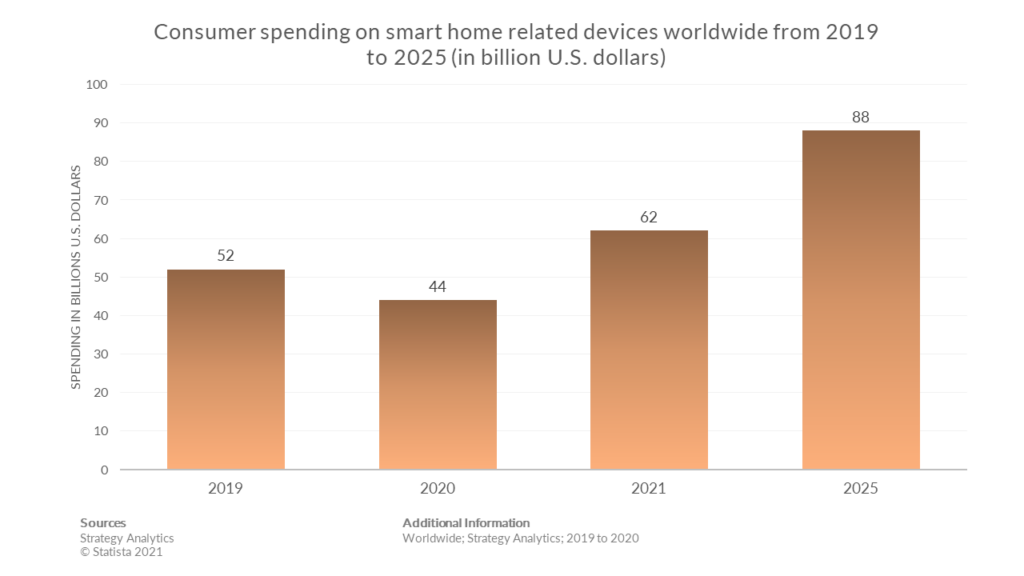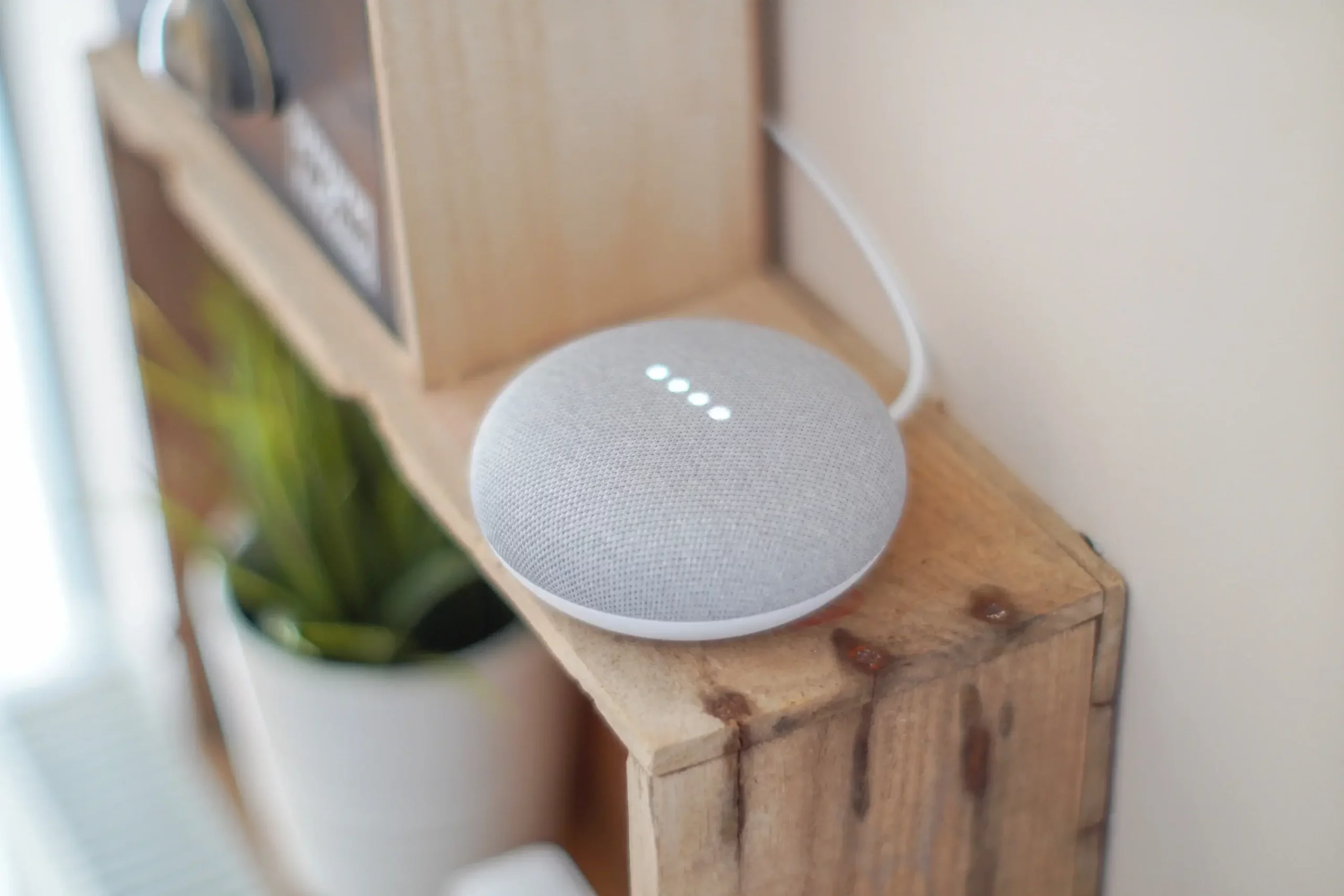The smart home hardware market has rapidly risen in the past few years. With technology advancing at an unprecedented pace, consumers are more inclined to invest in smart home products than ever before. Consequently, worldwide consumer spending on smart home products from all electronics companies is expected to surpass 88 billion U.S. dollars by 2025. Also large companies like Apple are said to invest heavily in new devices and applications.
This growth can be attributed to several factors, including rising disposable incomes and increased awareness about the benefits of smart homes. Smart homes offer convenience, security, and energy efficiency that traditional homes lack. Products such as thermostats, lighting systems, security cameras and voice assistants have become increasingly popular among consumers as they seek to make their lives easier. Also a new industry standard called Matter is responsible for more interest since connection and setup between devices from different brands will get much easier. The first devices hit the market in late 2022.
As a result of this growth trend, there has been an influx of new players entering the market with innovative products that cater to diverse consumer needs.
An Overview of Consumer Spends on Smart Home Products from 2019-25
Consumer spending on smart home hardware has been steadily increasing over the years. In 2019, consumers worldwide spent $52 billion on smart home products. This represented a significant increase from the previous year’s spending of $47 billion.
In 2019, consumer spending on smart home products reached an all-time high of $52 billion. However, by 2020, this figure had dropped slightly to $44 billion due to the global pandemic and economic uncertainty.
Despite the past year’s challenges, consumer spending on smart home products rebounded strongly in 2021. According to industry experts, consumers have spent an estimated $62 billion on smart home devices, such as thermostats, security systems, and lighting controls. The increased demand for these devices can be attributed to more people working from home and a growing awareness of energy efficiency.
Furthermore, analysts confirm that consumer spending on smart home products will continue its upward trend in 2025, with a projected total of $88 billion spent globally. This growth is expected to continue as more people become aware of the benefits of having a smart home.

What is a Smart Home System?
Smart home systems have become increasingly popular over the years as more and more people see the benefits of having a smart home. A smart home system is a network of electronic devices, appliances, and systems that can be controlled remotely by a smartphone or computer. These systems provide various functions that make our lives easier, safer, and more convenient. Various consumer electronics product designs now include smart features that can be integrated.
One of the most common features of smart home systems is remote access. With this feature, you can control your home’s lighting, temperature, security cameras, and other appliances from anywhere in the world using your smartphone or computer. This means you can turn on/off lights when you’re away from home to deter burglars or adjust the thermostat before returning from vacation to ensure your house is comfortable. Additionally, some smart home systems allow for voice control with virtual assistants like Amazon Alexa or Google Home.
The Largest Share of Hardware in the Smart Home Industry
Entertainment has become an essential part of life, offering relaxation and restoration. A control system with multiple rooms controls all devices within the house and allows one to concentrate on music, videos, and other entertainment from any location.
Major control systems used in smart homes are volume, audio and various multimedia room controls. The growth of the market for audio, volume, and multimedia room controls is driven by the convenience of controlling the entertainment systems within a home.
Advancements in wireless communication technologies are driving the growth rate of the smart homes market for home theater systems controls, thus driving the market for entertainment control systems by new electronics development. The impressive traction enjoyed by by-products such as smart meters and smoke detectors is a major factor behind this development.
According to media reports, electricity costs are a major reason for consumers to look for new ways to save power. Along those same lines, the increasing popularity of smart plugs, smart hubs, and smart locks is also spurring consumers to seek out control systems.
Major Markets of Smart Home Products
North America is likely to account for the largest share of the worldwide smart home market owing to the growing desire for reliable home energy management systems and better home security levels, and the growing popularity of smart devices such as smartphones and tablets. The smart home industry in the Asia-Pacific region is projected to experience the fastest growth in the coming years. Factors such as strong economic growth, boosted population growth, improved quality of life, and rapid urbanization make infrastructure development more sophisticated. This will drive the growth of the smart home industry in this region.
Wrapping Up
I hope you enjoy this blog and quickly review consumer spending on smart home hardware from 2019 to 2025. We will also discuss some common factors about the smart home system and review the industry’s major market worldwide. If you want to buy new smart home products yourself, make sure they are following the new Matter standard. A list of compatible new devices can be found here on The Verge.




